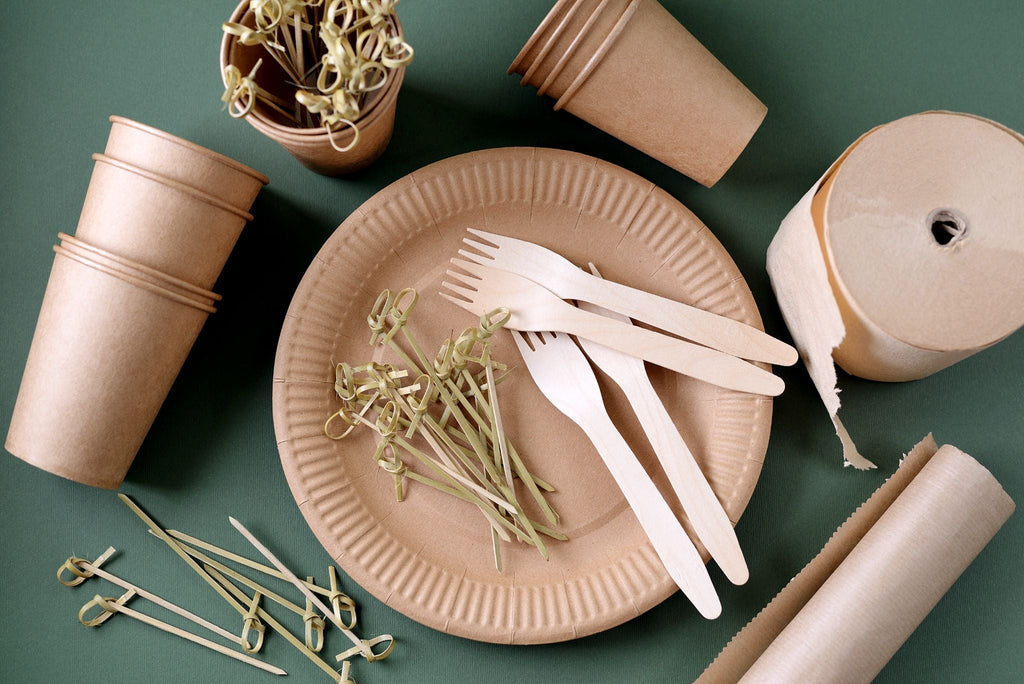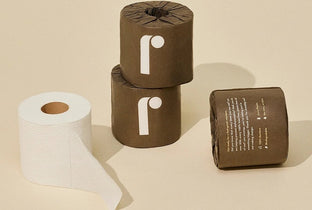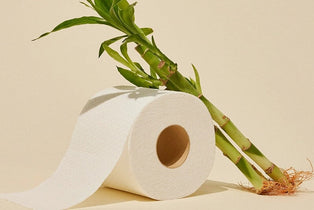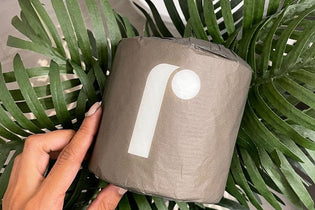
TLDR
From recycling to composting, there’s so much we can do to make our world a little greener. But whether you’re just starting a more earth-friendly lifestyle or are a lifelong environmentalist, you might be wondering about one new paper alternative on the eco-scene—bamboo.
Is bamboo sustainable? Absolutely.
Bamboo paper products are naturally a more eco-friendly choice. But keep in mind some tree-free practices are far more sustainable and supportive of our environment than others. People debate which is better, bamboo vs. recycled toilet paper, but there’s merit to both. Read on to learn all about why it’s time for you to make the switch to bamboo.
Where and How Is Bamboo Produced?
Let’s start with the bamboo basics. If you haven’t heard about this sustainability superstar, bamboo is a tree-like grass that flourishes in Southeast Asia and other southern countries. Bamboo is one of the types of grass that can grow as tall as a tree.
It also boasts the following unique qualities:
- It grows super fast – Bamboo can sprout at the astonishing rate of three feet in a day. That means it can grow as tall as you (or taller) in just two days. And it can grow taller than a small building in a month.
- It’s incredibly strong – Bamboo is stronger than steel, with a tensile strength of 28,000 PSI to steel’s 23,000 PSI.
- It has many versatile uses – You can use this super-plant in countless ways. The raw material can produce bamboo straws or bamboo flooring. Other use cases of bamboo products include clothes, rope, furniture, bedding, kitchen tools, disposable dishware, paper, and so much more. You can even eat bamboo shoots! That means you could hypothetically eat bamboo with bamboo utensils while sitting at a table made out of bamboo for a complete bamboo experience.
These qualities make bamboo a unique plant. The bamboo plant is a solid alternative to traditional tree fiber products.
5 Environmental Benefits of Bamboo
When it comes to improving the planet’s health, we’re aware that using sustainable products is critical.
We know that bamboo grows fast, has stronger-than-steel strength, and offers more uses than a Swiss Army Knife. But how do all these features play into a more sustainable lifestyle?
Here are five reasons why bamboo is an excellent sustainable material:
#1 You Can Grow a Lot of It
Because bamboo grows at such a fast rate, it’s much easier to replenish than trees. While you might need to wait thirty to fifty years for any trees you’ve planted to mature enough to harvest, a bamboo forest is grown and ready to be used in three to seven years.
#2 Bamboo Doesn’t Need Replanting
When you cut down a tree, you leave behind a stump and roots that will soon rot away. All possibility of regrowth is cut off completely. This isn’t the case for bamboo.
Bamboo is the comeback kid.
Bamboo can grow back from its roots because its root systems develop underground. It’s built to last and doesn’t leave lifeless stumps behind when harvested.

#3 It Needs Fewer Resources
Trees take lots of space, time, and resources to grow. Plus, removing them from their natural habitat can come at a high environmental cost for the surrounding ecosystem. In contrast, bamboo forests are easier to farm and regrow in natural habitats faster than trees.
#4 Bamboo Fights Deforestation
Bamboo goes beyond sustainability—it gives back to the environments it’s planted in as well.
When you think of environmental causes you support, one of the first that comes to mind might be deforestation. It’s one of the more serious issues facing the planet:
- Every two seconds, a sector of the forest the size of a soccer field is lost
- Deforestation for paper production harms animal life and biodiversity
- Cut-down trees can’t absorb CO2 emissions
- People also burn deforested trees, releasing more harmful chemicals and CO2 into the atmosphere
Fortunately, bamboo can help. Using bamboo to make paper products instead of chopping trees keeps CO2 out of the atmosphere. It also keeps the trees standing, allowing them to absorb even more CO2 in the long run. So bamboo products are the perfect win-win scenario for you and the environment.
#5 It Plays a Role in Air Purification
Research shows that bamboo is fantastic at providing oxygen and—more importantly—reducing carbon dioxide in the surrounding environment:
- Bamboo can soak up a potential 12 tons of carbon dioxide per hectare in a year, removing it from the atmosphere.
- It’s also better at giving off oxygen than trees, producing up to thirty-five percent more for its habitat.
The (Very Few) Potential Drawbacks of Bamboo
Even the most ultra-sustainable products have at least one potential drawback. And bamboo is no different. Its potential sustainability drawbacks come in these forms:
Shipping Concerns
With a click of a button, you can have a bamboo item from across the world delivered to your door in a matter of days. Though connecting to quality bamboo products is easier than ever, the actual process of getting an item from point A to point Z can negatively impact the planet.
Here’s why:
Most of the world’s bamboo comes from Southeast Asia – specifically, China and India. But people need sustainable products everywhere. That means people need to ship all the bamboo worldwide, creating carbon emissions. While there are steps you can take to make sure shipping is carbon neutral, it’s hard to guarantee that’s been done for each bamboo product you find at the store.
So how do you offset this potential disadvantage?
Buy local. Do a little research on brands that offer bamboo products to see where they source their bamboo. The less distance the bamboo has to go to be processed or purchased, the fewer carbon emissions.
Additionally, carbon-neutral shipping is finally beginning to hit the mainstream, allowing you to fully enjoy your bamboo textile or bamboo product with confidence in your sustainability decisions.
Manufacturing Concerns
Is a sweet potato healthy? Definitely. But is it still as healthy when you deep-fry it and cover it with ketchup? Not so much.
The lesson here is simple: preparation can render a perfectly healthy ingredient into something not quite as beneficial.
The same can be said for the bamboo manufacturing process.
There are specific methods of making bamboo textiles that can do more harm than good. For example, chemical retting—the process in which fibers are separated from the bamboo plant’s stem using chemical agents—can release damaging toxins into the air and local water systems. Water retting has the same aim as chemical retting but uses vast amounts of water and energy, undermining bamboo’s original sustainable virtues.
The good news is that these methods are primarily used for bamboo fabric and viscose. Even better? They aren’t the only method of transforming natural bamboo into plush bedding or clothing. Bamboo can be processed using the Lyocell process, which uses less harmful chemicals to turn bamboo into consumer products. You should research products and their processing methods to support your sustainability goals better.

How to Switch to Bamboo Eco-Friendly Products
Since you know the answer to the question “is bamboo really eco-friendly” is a resounding yes, you might imagine a future where your home is plastic-free and tree-free. But planning to make this future a reality means you have to know which products you can replace and which you can’t.
Fortunately, there are a lot of different bamboo-related replacements to plastic. There are many different uses of bamboo, such as:
- Furniture
- Fabric
- Paper towels
- Flooring
- Toilet paper
Since eco-consciousness is becoming the new norm, companies are trying to offer products you can use to be more sustainable. That means you have a lot of bamboo-related options to choose from.
You can go big with bamboo furniture or start small by swapping out the paper products in your home for environmentally friendly options. Helping the planet has never been easier.
However, sustainable living is being aware of over-consumption. Here are some tips on how to start a slow shift to bamboo to see the lasting results you want:
- Change over your paper products first – Instead of rushing to buy a bamboo bed, start your journey slowly. It’s easy to switch your traditional paper towels for bamboo paper products and start making a difference without a large investment up front.
- Start small with furniture – If you know you’re committed to the bamboo aesthetic, try a trial run in one of your rooms first. Starting with a smaller item such as coffee tables will help you see if you’re ready to go bamboo everywhere.
- Always do your research – Before you make a purchase, double-check production and shipping methods for the company so you can be confident in the sustainability of your purchase.
Go Tree-Free With Reel Paper
Answering the question “why is bamboo sustainable” is easy because of its many incredible benefits. Its fast-growing speed, ability to trap CO2, and lack of needed resources might even inspire you to explore what can you make with bamboo.
But where can you find bamboo paper to make the switch if it’s not at your local supermarket? That’s where we come in. Reel Paper delivers bamboo toilet paper, bulk toilet paper, and paper towels right to your door and supports your bamboo sustainability goals. We also ship on a schedule, so you never have to worry about running out.
Try Reel Paper today and watch your carbon footprint shrink.
Sources:
Eco & Beyond. Truth or Trend: Is Bamboo Sustainable https://www.ecoandbeyond.co/articles/is-bamboo-sustainable/
Wooly Green. Bamboo Sustainability: Is It As Eco Friendly as You Think? https://woollygreen.com/is-bamboo-sustainable/
The Guardian. The bear’s necessity. https://www.theguardian.com/environment/2003/mar/20/research.science
WWF. The Effects of Deforestation. https://www.wwf.org.uk/learn/effects-of/deforestation




0 comments